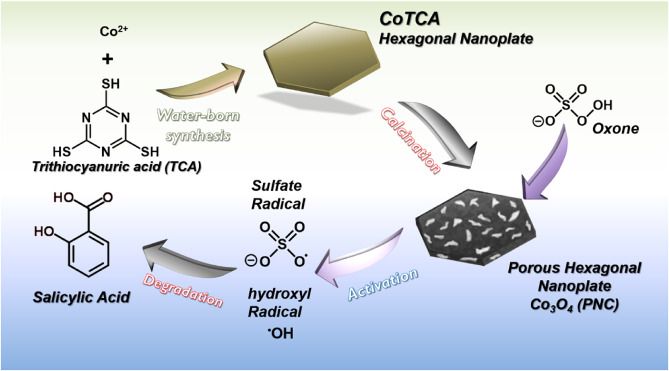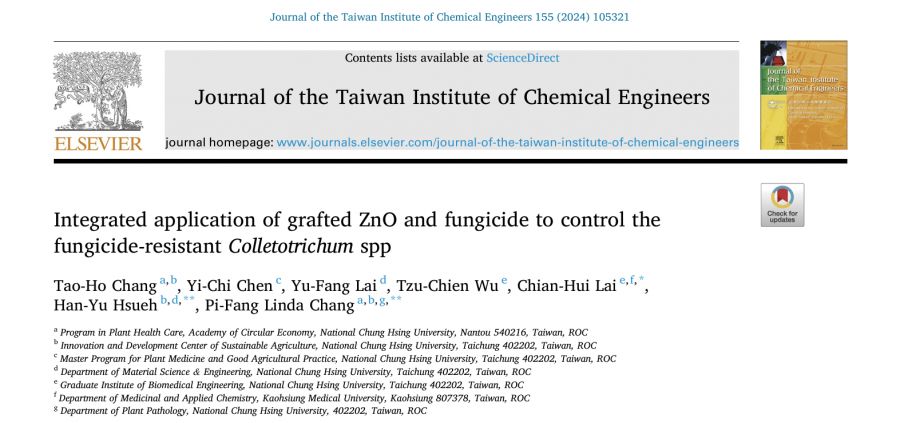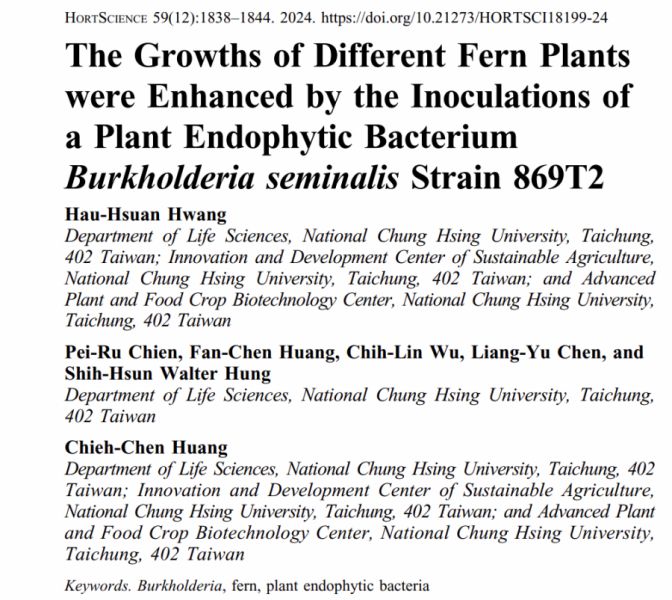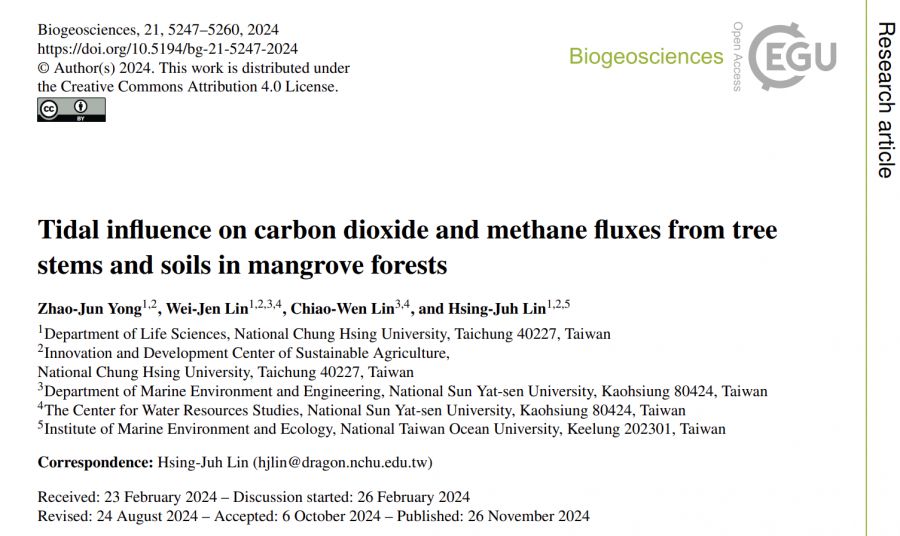循環農業:農業廢棄物高價值化【環境工程學系/林坤儀特聘教授】
| 論文篇名 | 英文:Porous hexagonal nanoplate cobalt oxide derived from a coordination polymer as an effective catalyst for activating Oxone in water 中文:配位聚合物衍生的多孔六角形奈米板氧化鈷,可作為活化水中過一硫酸氫鉀的有效催化劑 |
| 期刊名稱 | CHEMOSPHERE |
| 發表年份,卷數,起迄頁數 | 2020,261, 127552 |
| 作者 | Tuan, Duong Dinh; Hung, Ching; Oh, Wen Da; Ghanbari, Farshid*, Lin, Jia-Yin; Lin, Kun-Yi Andrew(林坤儀)* |
| DOI | 10.1016/j.chemosphere.2020.127552 |
| 中文摘要 | 由於鈷(Co)代表一種有效的過渡金屬,可激活過一硫酸氫鉀降解污染物,因此四氧化三鈷(Co3O4)被廣泛用作Co的異相相,以激活過一硫酸氫鉀。由於可以操縱Co3O4以顯示各種形狀,因此Co3O4的二維板狀形態可以提供較大的接觸表面。如果大的板狀表面甚至可以是多孔的,形成多孔奈米板Co3O4(PNC),那麼這種PNC應該是有希望的過一硫酸氫鉀活化催化劑。因此,提出了一種簡便而直接的方法來製備用於活化氧酮以降解污染物的PNC。特別地,採用通過Co 2+和三聚硫氫酸(TCA)之間的配位合成的具有六角形奈米板形態的鈷配位聚合物。通過煅燒,CoTCA可以轉化為具有孔的六角形奈米板狀Co3O4,成為PNC。在表面反應性和質地結構特性方面,該PNC還表現出與商用Co3O4納奈米顆粒(NP)不同的特性。因此,PNC表現出比市售Co3O4 NP高得多的催化活性,以活化Oxone降解模型污染物水楊酸(SA)。具體地,在120分鐘內,通過PNC活化過的一硫酸氫鉀 100%降解了SA,並且通過PNC活化過的一硫酸氫鉀的SA降解的Ea為70.2kJ / mol。即使存在其他陰離子,PNC也可以保持穩定且對SA降解有效,並且PNC可以在多個循環中重複使用,而不會顯著降低催化活性。這些特徵證明,PNC是一種有希望和有用的鈷基催化劑,用於一硫酸氫鉀活化。 |
| 英文摘要 | As cobalt (Co) represents an effective transition metal for activating Oxone to degrade contaminants, tricobalt tetraoxide (Co3O4) is extensively employed as a heterogeneous phase of Co for Oxone activation. Since Co3O4 can be manipulated to exhibit various shapes, 2-dimensional plate-like morphology of Co3O4 can offer large contact surfaces. If the large plate-like surfaces can be even porous, forming porous nanoplate Co3O4 (PNC), such a PNC should be a promising catalyst for Oxone activation. Therefore, a facile but straightforward method is proposed to prepare such a PNC for activating Oxone to degrade pollutants. In particular, a cobaltic coordination polymer with a morphology of hexagonal nanoplate, which is synthesized through coordination between Co2+ and thiocyanuric acid (TCA), is adopted as a precursor. Through calcination, CoTCA could be transformed into hexagonal nanoplate-like Co3O4 with pores to become PNC. This PNC also shows different characteristics from the commercial Co3O4 nanoparticle (NP) in terms of surficial reactivity and textural properties. Thus, PNC exhibits a much higher catalytic activity than the commercial Co3O4 NP towards activation of Oxone to degrade a model contaminant, salicylic acid (SA). Specifically, SA was 100% degraded by PNC activating Oxone within 120 min, and the Ea of SA degradation by PNC-activated Oxone is 70.2 kJ/mol. PNC can also remain stable and effective for SA degradation even in the presence of other anions, and PNC could be reused over multiple cycles without significant loss of catalytic activity. These features validate that PNC is a promising and useful Co-based catalyst for Oxone activation. |







